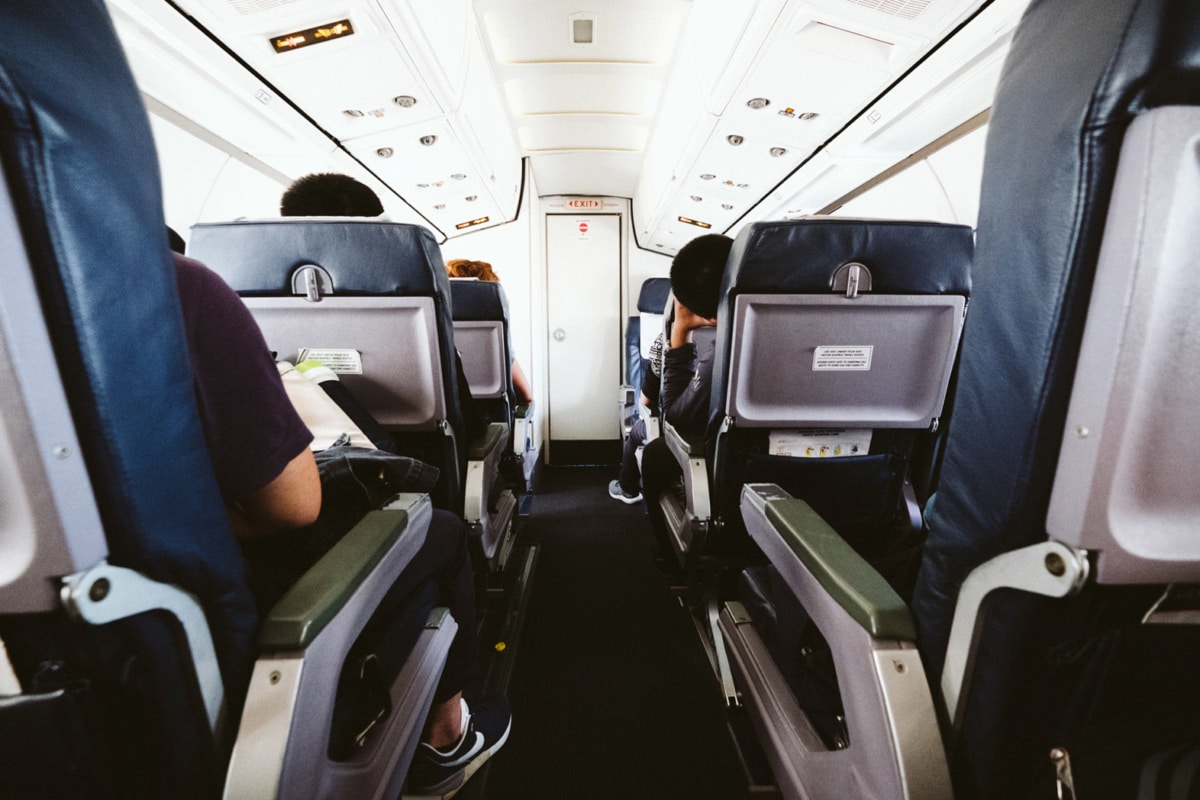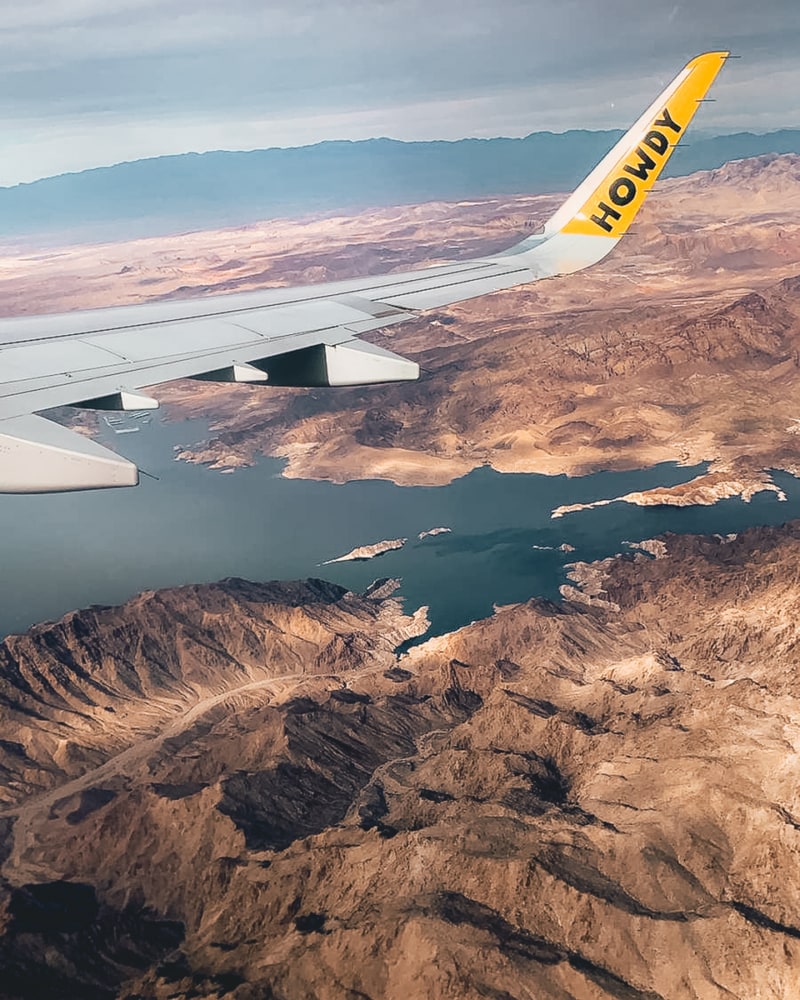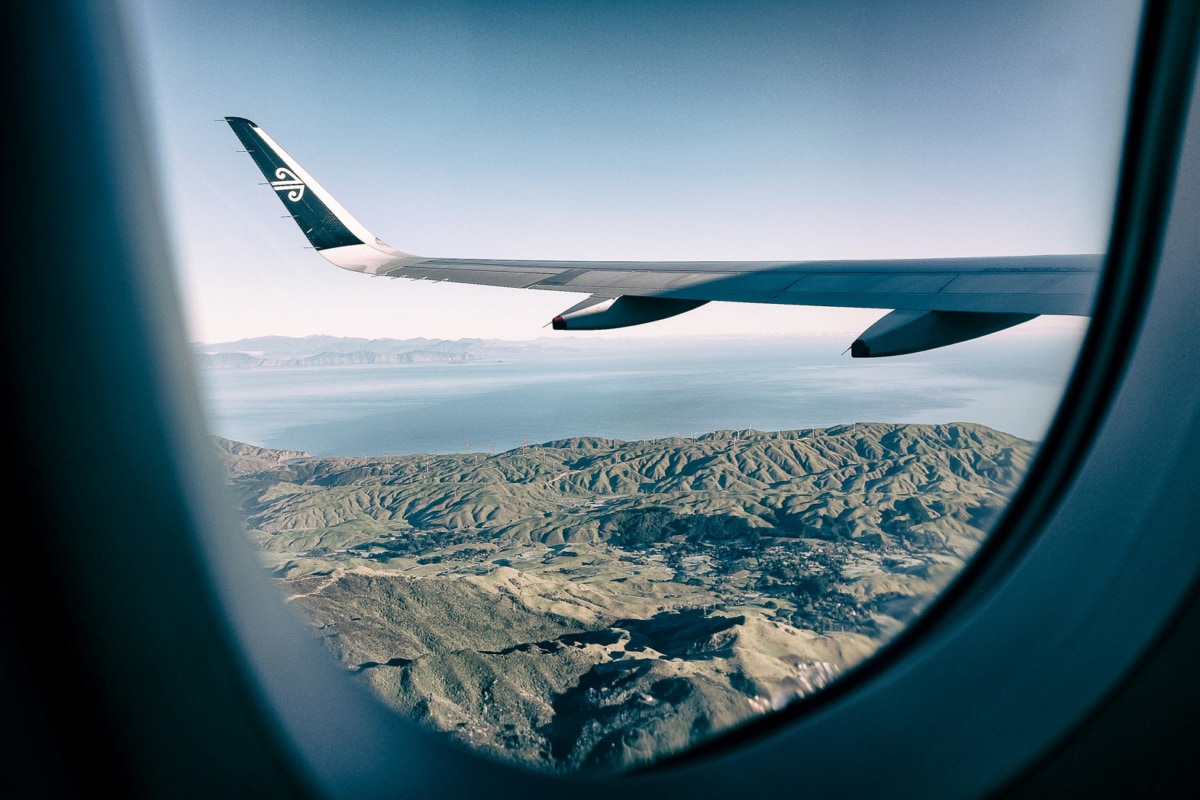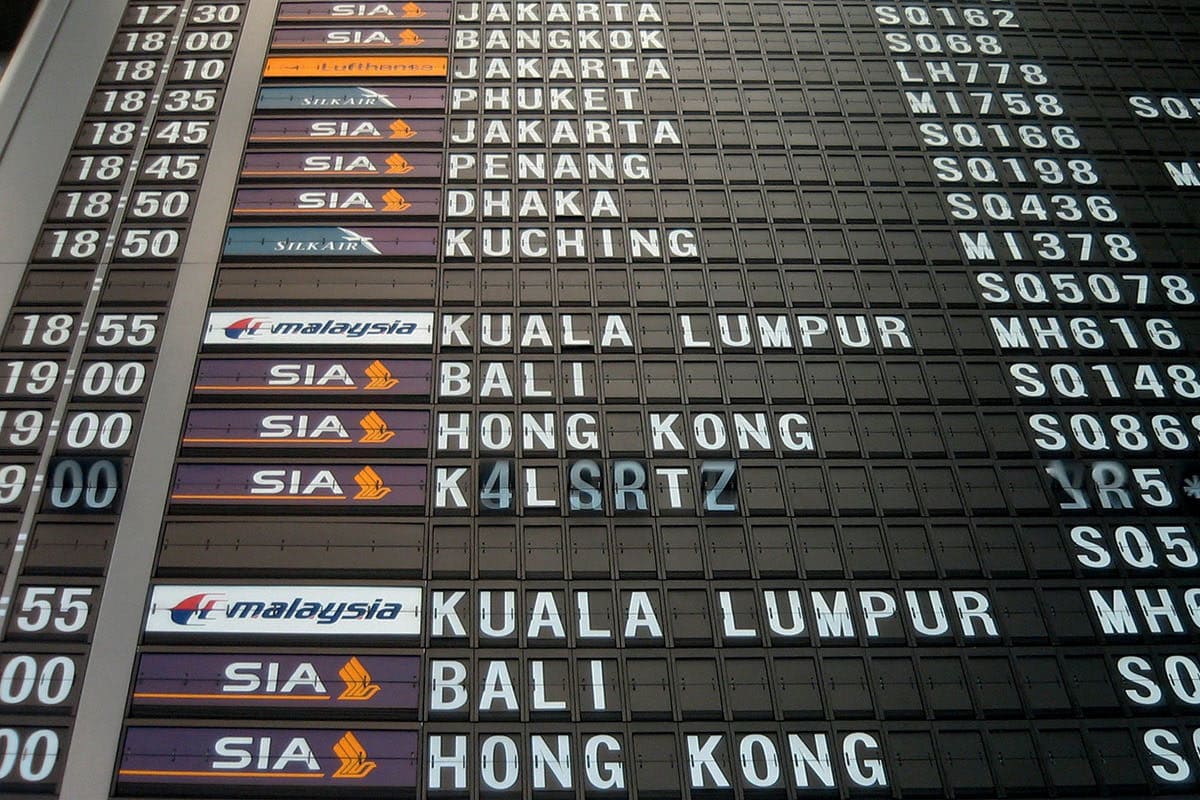Tips for Flying: 11 Things You Should Know Before Your Flight
Even for the most seasoned travelers traveling can be a stressful experience. Use these 11 travel hacks to lessen the burden on your next trip.

Most of us plan trips to get away from the stresses of home and work. But did you even think about the fact that travel can be stressful, in and of itself?
Flying can be incredibly daunting if you don’t know how to find cheap flights, how to successfully navigate airports, or even how to survive that long-haul journey.
Even for seasoned travelers these aren’t necessarily easy feats—nevermind all the potential travel hiccups along the way (read: weather delays, traffic jams, airline strikes, cancelled flights, unanticipated health issues, etc.).
To make matters even worse, stress begets stress. Two common travel pain points? Leaving the stresses of home and work behind (yes leaving stress behind can be stressful in and of itself), and having too many options (information overload) when it comes to researching and planning.
Fortunately, there are plenty of ways to take the stress out of flying. These tips for flying will help you do just that.
Utilize Long Layovers to Save Money
If your travel time is flexible, you can usually fly for very little money because you can pick and choose the cheapest dates. To save even more money, keep an eye out for long layovers. Oftentimes you’ll find the best flight deals include lengthy layovers in other cities.
Usually, the layover is in between two shorter (and, therefore, usually cheaper) flights that happen to be far apart time-wise.
With a long enough layover, use your spare time to either get some rest or sightsee around the city before your next flight. Some airlines promote long layovers (of up to a week!) so you can do a little sightseeing on your stopover.
Or, if sleeping in an airport doesn’t bother you, you can opt for an overnight layover and make the terminal your own personal hotel for the night (make sure you’re equipped for this, both mentally and in terms of sleeping gear). Many airports even have lounges with beds that you can book for a few hours of comfortable shuteye.
Opt for a Budget Airline

While budget airlines tend to get a bad rap for tacking on extra fees, they will actually still save you a lot of money. Instead of charging you upfront for things you may or may not use, they operate on a different cost model by only charging you for the things you use.
So, essentially, all of those extra fees that budget airlines charge are a lot of the same costs that just come as part of the ticket price for many mainstream airlines.
Psychologically, it may frustrate you to pay extra for luggage. But you’re paying, what Spirit Airlines calls, “à la smarte” pricing. After all, if you’re not bringing a huge suitcase, why should you have to pay the same amount as someone who is?
Likewise, if you’re not eating on the plane, why should you have to pay the same amount as those who are?
Share a Suitcase
To that end, if you’re traveling with a friend or partner, bringing a single suitcase can save you a lot of money (and back pains—you can take turns lugging it around).
If you’re flying on a budget airline like Spirit, where you’re paying “à la smarte,” this can be a cheaper alternative to paying for two carry-on bags since you’re splitting the cost of a single checked bag.
Even better, you reduce the risk of a lost piece of baggage by 50%. Those are good odds!
BYO Snacks
Sadly, free airline meals are (mostly) a thing of the past. And not only is the airplane food that is available notoriously mediocre, it’s also crazy expensive. Bringing your own food will (probably) taste better and save you more than a few bucks in the process.
If you have the time, cook at home and bring your food in Tupperware containers in your carry-on. Contrary to popular belief, food is allowed through security gates.
Alternatively, buy a sandwich or snacks at an eatery near your gate before boarding, or even order restaurant food to go.
Don’t forget: Full water bottles aren’t allowed past security, so bring an empty, reusable bottle and fill it up once you get to your gate. It will save you money and help the planet, too, by reducing one-use plastics. Once you board, water is almost always available for free—just ask your friendly flight attendant to fill you up.
Pack a Special In-Flight Bag in Your Carry-On Bag
Sifting through your carry-on luggage to find your headphones or socks while you’re already on the plane is a pain. You don’t want to be that passenger who’s performing some kind of balancing act, trying to unzip your bag in the overhead, dropping bits and bobs from your bag onto unsuspecting passengers below.
So pack a dedicated “flight bag” that fits inside your carry-on to carry everything you need for your flight (headphones, iPad, lotion, earplugs, eye mask, chapstick, socks, etc). This way you don’t have to go through the luggage bins every time you need something. Just snatch the bag and you’re good to go!
Turn Cattle Class into First Class
This is one of my favorite flying tips of late: Carry a cloth, foldable drawer (it easily fits into the laptop sleeve of your backpack) and book the seat at the very front of economy. Then unfold the drawer, place it in front of you and use it as your leg rest. Boom—you’ve just turned cattle class into first class.
Sure, you might have to pay extra for that front row, but $50 for what essentially becomes a first class reclining seat is worth it if you ask me! Especially for long-haul flights.
And invest in a really good neck pillow, like the Cabeau Evolution S3 Travel Pillow. The right one is going to make a world of difference on that long-haul flight (note: this is the right one).
Make sure you’re wearing comfortable, warm clothes, too. Airplanes are notoriously cold, so wear long sleeves, and even bring an extra blanket to keep you warm.
On top of comfort items, you should also consider entertainment. While many airlines have great in-flight entertainment options, they might not have all of your favorite films and shows. And, if they do, there may very well be a price to pay.
Before you head to the airport, download your favorite movies and shows onto your phone or tablet (Netflix and Amazon Prime both have a download feature that’s perfect for this).
Pack a portable battery pack (the Anker PowerCore is my charger of choice) so you don’t run out of juice, and a pair of noise-canceling headphones, like the Bose QuietComfort 35.
Use Comparison Booking Sites to Save Time and Money
Comparison flight booking sites take the pain out of comparing flights yourself. They do this by compiling all of the flights going to your destination, finding the cheapest options, and even letting you look ahead to see when the cheapest time to fly is all on one neatly organized platform.
I swear they use black magic to summon these deals from the depths of the internet but, however they do it, Skyscanner and Momondo are two of the best comparison booking sites out there.
- Skyscanner: Skyscanner is probably my favorites booking site out there. I have the app on my phone, and I use it whenever I feel the travel bug strike. If I’m trying to fly at a particular time, Skyscanner sorts through the cheapest flights and ranks them by cost and airline rating. Otherwise, if I’m flexible, I’ll just look out for the cheapest times to fly to my destination (or to anywhere in the world!). Unlike other sites, Skyscanner allows you to hunt down flights for anytime during entire weeks or months of the year.
- Momondo: Momondo is similar to Skyscanner, though the interface is a lot more fun to use. Like Skyscanner, the site boasts a travel roulette feature where you can pick departure city and then either enter a specific destination or just pick a continent (or choose “Everywhere”). Momondo will show you the cost to fly to any major city on the dates you’re viewing. Unlike Skyscanner, however, you can view your options on a map format. It’s perfect for more visual planners.
Travel During the Off-Season
Traveling during peak times like summers and holidays is always going to be more expensive and far busier. If you have some flexibility in your schedule, plan a vacation during the off-season for that destination. For example, avoid traveling to Europe in the height of summer when everyone else is there. Wait to visit until the fall, just after everyone’s left.
When traveling outside of peak times, all aspects of your trip will be cheaper, not just your flight. Hotels and resorts often have lower rates on the off-season, too. Because accommodation costs can add up quickly, planning a March vacation instead of a July vacation might just save you a lot of dough.
Book (and Fly) at the Right Time

Though the advice on when to book varies greatly, there seems to be a rough consensus on when flights are cheapest and easiest to find. While there are many exceptions to this, generally booking two to three months in advance is likely to give you the best ticket prices and routes available.
Recent research from CheapAir.com suggests the best time to book a flight during the winter is 62 days in advance, while you’ll want to book spring flights 90 days in advance, summer flights 47 days in advance and fall flights 69 days in advance.
The math may seem silly and, while the specific numbers may not matter that much, the difference between the best-priced and worst-priced summer flights in the study was $203. For spring, the difference was $263.
There are also certain days of the week that are cheaper to fly. Specifically, Tuesdays and Wednesdays are the cheapest travel days of the week to travel on average, while Sundays are the most expensive.
Often you’ll also find last minute deals or prices will go down after you’ve booked since airlines are trying to sell out the rest of the remaining seats. So booking at the very last minute could work, too, though it’s risky (and potentially even more stressful).
Pack to Fly Carry-On Only
Fit everything you need into a carry-on backpack or carry-on suitcase and you’ll save money on those checked bag fees and time on picking up (and transferring) your luggage.
Bringing just the essentials can be tough, especially if you’ve never traveled carry-on only before and if you’re used to having all your amenities and routine items from home. But there are some easy ways to make sure you don’t overpack:
- Think about what you can buy at your destination: soaps and shampoos, sunscreen, etc. Leave all these things at home.
- Don’t pack outfit options. Only pack what you need.
- Cut down on shoes. They’re bulky and take up a ton of space. Bring one or two practical pairs that can go with everything, such as sandals for warm weather destinations and sneakers that you can wear during outdoor adventures or as casual walking shoes.
- Consider a capsule wardrobe. This means only packing items that can easily be mixed and matched. Pack tops and bottoms that can be interchangeable, and a jacket that works with all of them.
- Embrace minimalism by unpacking three to five items after you’ve already packed. Chances are you still don’t need all of it, even if you packed strategically. For example, you don’t need a million pairs of socks or multiple t-shirts of the same color. Rather, pack just a few pairs of socks that you can wash and only a handful of neutral t-shirts that will match any outfit.
Sign up or TSA Precheck + Global Entry

TSA Precheck and Global Entry aren’t just a luxury for frequent travelers—they’re essential. Breeze through the security check-in without having to stand in lines anxiously checking your watch to make sure you can still make it to your gate on time.
TSA PreCheck expedites your security screening. You’re given access to a special line that’s usually shorter and you don’t have to remove your shoes, jacket, laptop, or liquids and gels from your carry-on.
With a five-year, $85 membership, it’s available at participating U.S. airport locations and for most international itineraries.
PreCheck is a lifesaver if you travel often (and are often late). You won’t waste time repacking your carry-on bags or dressing yourself when your flight is about to take off without you. Click here to sign up for PreCheck today.
Global Entry is a similar program through the U.S. Customs and Border Protection service that gives you expedited clearance upon your arrival into the United States. If you want to avoid getting stuck in long lines at Customs—or getting asked a million questions when you finally reach the States—you won’t have to wait a while.
As of October 2017, Global Entry was available at 54 airports and 15 pre-clearance locations across the country. Click here to apply for Global Entry today.
If you’re feeling stressed about upcoming travel plans, rest assured that you’re not alone. But you can take the stress out of flying by utilizing these flying tips when you’re planning your trip and finally embarking on it.
Bon voyage!
Tips for Flying FAQs
How can I make flying easier?
Some ways to make flying easier are to travel carry-on-only, wear loose, comfortable clothing, and bring noise-canceling headphones.
What helps with first-time flying?
Some things that help with first-time flying are to arrive early, double check that you have your documents, and wear easy-to-remove shoes.
What calms you down before flying?
Taking deep slow breaths can help you calm down before flying.
Can I bring a water bottle on a plane?
Yes, you can bring a water bottle on a plane. It just has to be empty to go through security. You can refill it before boarding.
How do I calm my flying anxiety?
Some of the best ways to calm flying anxiety are to take deep breaths, listen to relaxing music, and do something to distract yourself.
